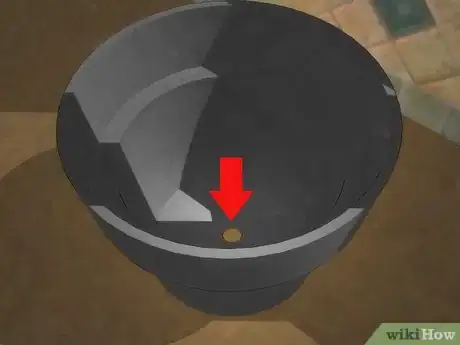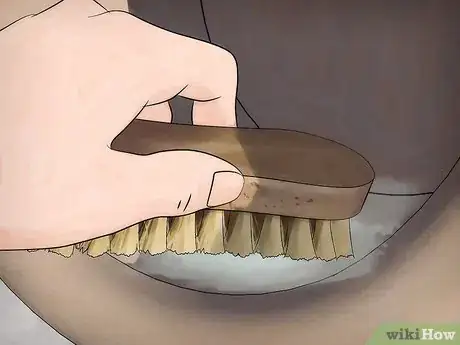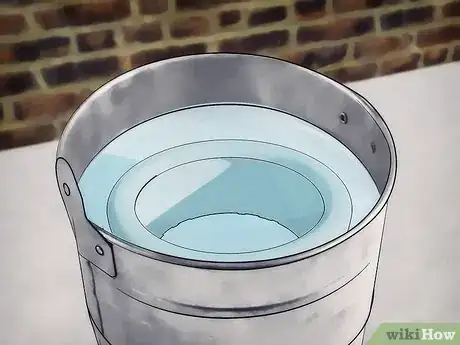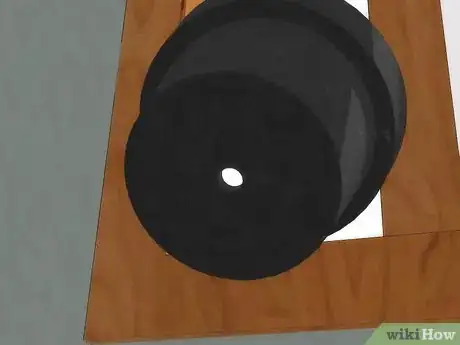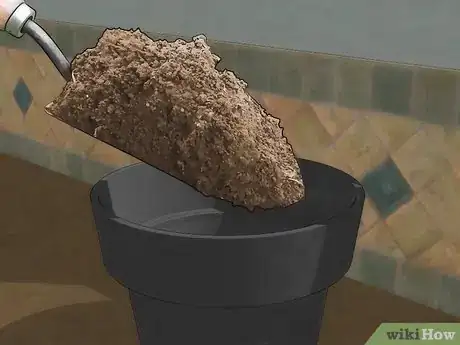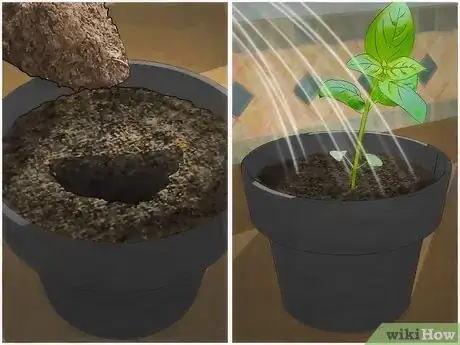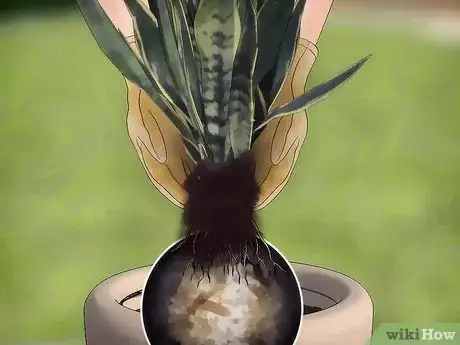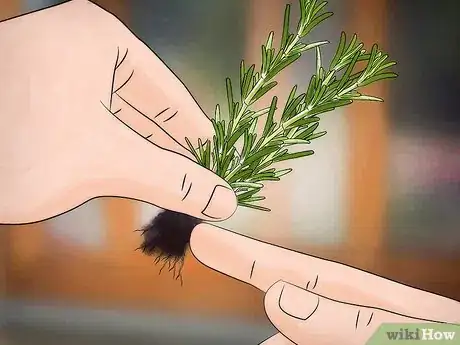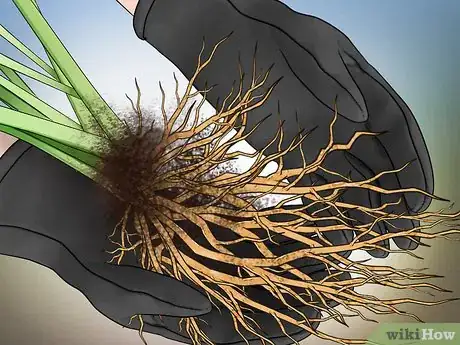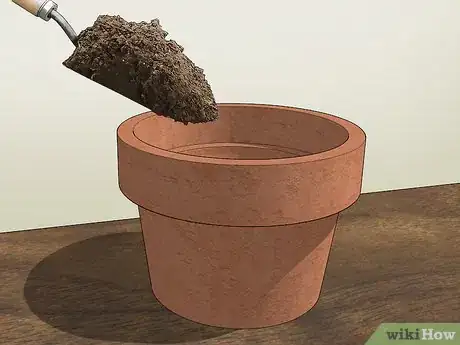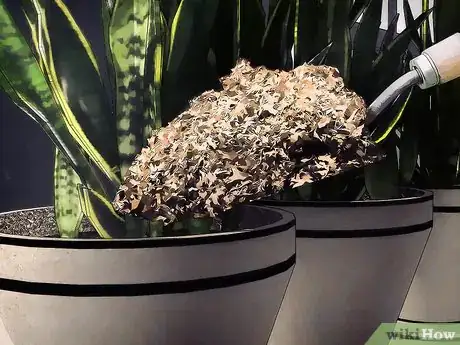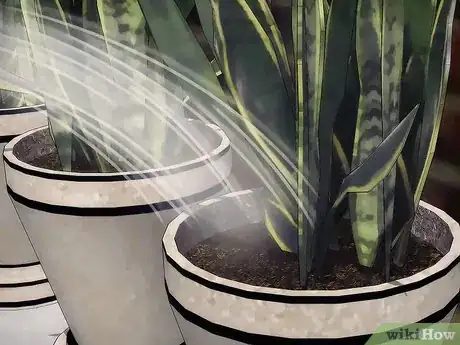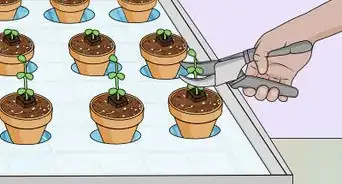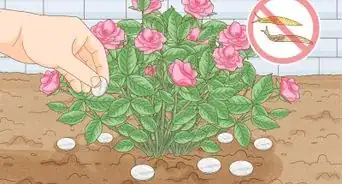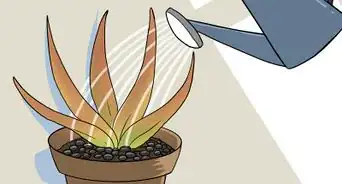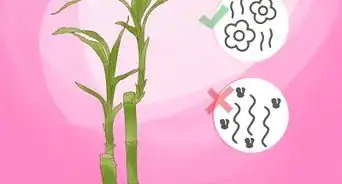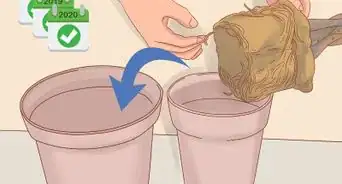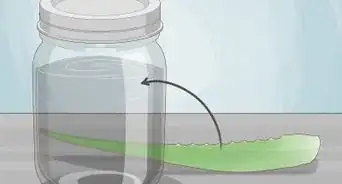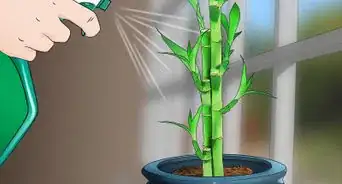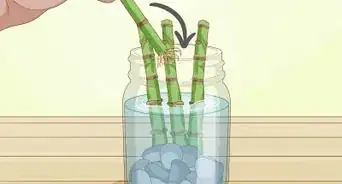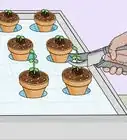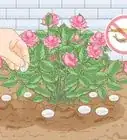This article was co-authored by Lindsey Swett. Lindsey Swett is a Plant Specialist and the Owner of Niche Plant Shop in Boston, Massachusetts. She has over a decade of experience working in several plant settings, including golf courses, public parks, and commercial garden centers. Her focus now is on helping plant owners care for their indoor plants. Lindsey holds a Master of Landscape Architecture from The University of Michigan.
There are 8 references cited in this article, which can be found at the bottom of the page.
wikiHow marks an article as reader-approved once it receives enough positive feedback. This article received 18 testimonials and 100% of readers who voted found it helpful, earning it our reader-approved status.
This article has been viewed 457,837 times.
Repotting a plant can seem like a difficult task because a lot of things can go wrong – you can damage the plant by removing it incorrectly from its old pot or fail to repot it correctly and therefore cause the plant to die. Knowing how to prepare a new pot, remove the plant from its old pot, and prepare the plant for its new pot can make repotting a plant a lot easier.
Steps
Preparing the New Pot
-
1Choose a slightly larger pot. If you’re repotting your plant into a new pot, choose a pot that is 1 to 2 inches larger in diameter and 1 to 2 inches deeper than the plant’s current pot.
- If you choose a pot that has dimensions larger than this, the roots will need to grow into the pot before the plant itself can begin to grow. In other words, the plant has to grow all the way down before it can grow upward.[1]
-
2Choose a pot with drainage holes. When you’re selecting a new pot, make sure it has drainage holes to allow excess water to drain. Even if you select a pot that is the correct size, you still don’t want water sitting in the bottom of it and causing root rot.[2]Advertisement
-
3Clean and disinfect the pot. It’s important to disinfect old pots before reusing them, as they can accumulate minerals or other debris that are detrimental to plant growth. Mineral salts, for example, can dehydrate your plant and keep it from flourishing. Other debris can harbor disease-causing organisms.[3]
- To disinfect your pot, soak it in a solution containing one part bleach and nine parts water for at least ten minutes. Place it in a solution of water and dish detergent and then rinse.
- To clean mineral deposits and debris from a steel pot, use steel wool or a wire-bristle brush to scrub them away. Plastic pots only need a scrubbing pad. You can scrape off any remaining deposits with a knife.
- Once you’ve cleaned the pot, rinse it with water and then soak it until ready for use.
-
4Soak the new pot. If you decide to use a terra cotta pot for repotting, make sure you soak the pot in water for a few hours before you begin the repotting process. Terra cotta is pretty porous, which means it soaks up water easily. You don’t want your pot stealing your plant’s water.[4]
-
5Cover the drainage holes. It’s important to have a pot with drainage holes, but you also want to make sure soil can’t escape through them. Cover the drainage holes with something that will allow water to pass through, like paper towel or a coffee filter.
- Using a porous material like paper towel or a coffee filter over the drainage holes will allow water to pass through so your plant doesn't drown, but it slows down the process so the water can actually soak into the soil and help your plant.[5]
-
6Put a few inches of soil in the new pot. You’ll need a base of soil under the plant so the roots have something to grow into.
- Don’t overfill the pot before you put the new plant in – the roots need something to grow into, but you also want them to be down far enough into the pot that they don’t stick out of the top.[6]
Preparing the Plant
-
1Water the plant. Your plant will come out of its old pot more easily if the rootball is moist. You’ll want to water the plant a few hours before you want to repot it. This will help it maintain its health even if it loses a root or two during the repotting.[7]
- The rootball is the part of the plant that extends into the actual pot. It’s made up of roots and soil and often keeps the shape of the pot after it’s removed[8]
-
2Remove the plant from its current pot. Place your hand over the top of the pot, and place your thumb and index finger around the plant’s stem. Then turn the pot on its side and gently work the plant back and forth until it comes out.[9]
- If the plant won’t come out after several tries, you can use a knife to cut around the edge of the soil and try again.[10]
- If you happen to break some of the roots, don't worry, you’ll need to prune the rootball anyway.
-
3Prune the rootball. To make sure your plant takes to its new pot, you’ll want to remove some of the old rootball to expose fresher roots to the new soil in the new pot. Clip off roots that hang below the rootball and make three or four slits in the bottom of the rootball about a third of the way up.[11]
- If the rootball is black or smells, your plant might have some kind of fungal disease. You might not be able to save this plant or repot it.
- You can also shave away roots that seem particularly thick on the sides of the rootball.[12]
-
4Untangle the remaining roots. Once you prune the rootball and have exposed the healthy roots, untangle some of the roots that are left over. This gives the roots more contact with the new soil in the new pot. It encourages the roots to grow outward, instead of around the rootball.[13]
Repotting the Plant
-
1Add some soil. You’ll first want to add some soil to the pot to give your plant a place to sit. Make sure that the top of the plant’s rootball will be no less than one inch below the rim of the pot, so that it won’t overflow when watered. You can even measure, to verify.[14]
-
2Place plant in new pot. As you place the plant into its new pot, center it by looking down on it from above and making sure it’s not closer to any one side of the pot than the others. You also want to make sure it’s sitting upright. While looking at the plant from the side, spin the pot and make sure the plant isn’t tilted in any one direction.[15]
-
3Fill the pot. Once you’ve placed the plant in the new pot, you’ll want to put soil into the pot around the rootball. Don’t overfill the pot - the soil line should be about 1” below the top of the pot.[16]
- You can “stuff” or “fill” when you’re adding new soil. “Filling” just means pouring soil in, around, and on top of the rootball. “Stuffing” means pouring the soil in and then pressing it down. You might want to “stuff” the pot for a top-heavy plant, because it will help you keep the plant steady and even.
-
4Water the plant. Once your plant is in its new pot and you’ve filled the pot with soil, water the plant. It will help the plant’s roots soak up the nutrients from the soil and ensure that the plant takes to the new pot.
- You might need to add more soil to fill in empty spots once you water the new plant and the soil settles.[17]
- It’s also best to keep the plant out of the sun and high humidity after repotting. Don’t fertilize it immediately, either.
Expert Q&A
-
QuestionCan you cut roots when repotting?
 Maggie MoranMaggie Moran is a Professional Gardener in Pennsylvania.
Maggie MoranMaggie Moran is a Professional Gardener in Pennsylvania.
Home & Garden Specialist While it is not advised to cut healthy roots, it is acceptable to prune the rootball of any dead or decaying roots.
While it is not advised to cut healthy roots, it is acceptable to prune the rootball of any dead or decaying roots. -
QuestionWhat kind of soil are best for a snake plant?
 Maggie MoranMaggie Moran is a Professional Gardener in Pennsylvania.
Maggie MoranMaggie Moran is a Professional Gardener in Pennsylvania.
Home & Garden Specialist Draining soil is a must for a snake plant, and additionally, check your local gardening store for a soil designed for succulents or cacti.
Draining soil is a must for a snake plant, and additionally, check your local gardening store for a soil designed for succulents or cacti. -
QuestionHow do you transplant a house plant?
 Maggie MoranMaggie Moran is a Professional Gardener in Pennsylvania.
Maggie MoranMaggie Moran is a Professional Gardener in Pennsylvania.
Home & Garden Specialist To transplant a plant to a bigger pot, start by watering the plant to make removal easier. Cover the new pot’s drainage hole and fill it halfway with soil. Then, gently place the plant in the new pot. Once you’ve filled the rest of the pot with soil, water the plant and place it in the sun.
To transplant a plant to a bigger pot, start by watering the plant to make removal easier. Cover the new pot’s drainage hole and fill it halfway with soil. Then, gently place the plant in the new pot. Once you’ve filled the rest of the pot with soil, water the plant and place it in the sun.
Warnings
- Don't cut away healthy roots unless you are pruning them so that the plant will remain the same size or be miniaturized (like for Bonsai).⧼thumbs_response⧽
References
- ↑ http://www.guide-to-houseplants.com/repotting-house-plants.html
- ↑ http://www.guide-to-houseplants.com/repotting-house-plants.html
- ↑ https://hortnews.extension.iastate.edu/1994/3-16-1994/clean.html
- ↑ http://www.guide-to-houseplants.com/repotting-house-plants.html
- ↑ http://www.finegardening.com/how-repot-container-plants
- ↑ http://www.finegardening.com/how-repot-container-plants.
- ↑ https://www.todayshomeowner.com/how-to-repot-houseplants/
- ↑ http://www.weekendgardener.net/how-to/repot-rootbound-plants.htm
- ↑ http://www.finegardening.com/how-repot-container-plants
- ↑ http://www.finegardening.com/how-repot-container-plants
- ↑ http://www.finegardening.com/how-repot-container-plants
- ↑ http://www.finegardening.com/how-repot-container-plants
- ↑ http://www.finegardening.com/how-repot-container-plants
- ↑ https://www.todayshomeowner.com/how-to-repot-houseplants/
- ↑ https://www.todayshomeowner.com/how-to-repot-houseplants/
- ↑ http://www.finegardening.com/how-repot-container-plants
- ↑ https://www.todayshomeowner.com/how-to-repot-houseplants/
About This Article
To repot a plant, start by filling the new pot with soil. However, take care to leave at least 1 inch between the plant's roots and the rim so there's enough room to water it. Then, water the plant before trying to remove it from its old pot, since the roots will come out easier if they're moist. Once you've removed the plant, prune some of the old roots, then place the plant in the center of the pot. Finally, fill in the edges with soil and water the plant to help the roots take nutrients from the new soil. To learn more from our Horticulturist co-author, like how to untangle any roots on the root ball, keep reading the article!
-Step-7.webp)
